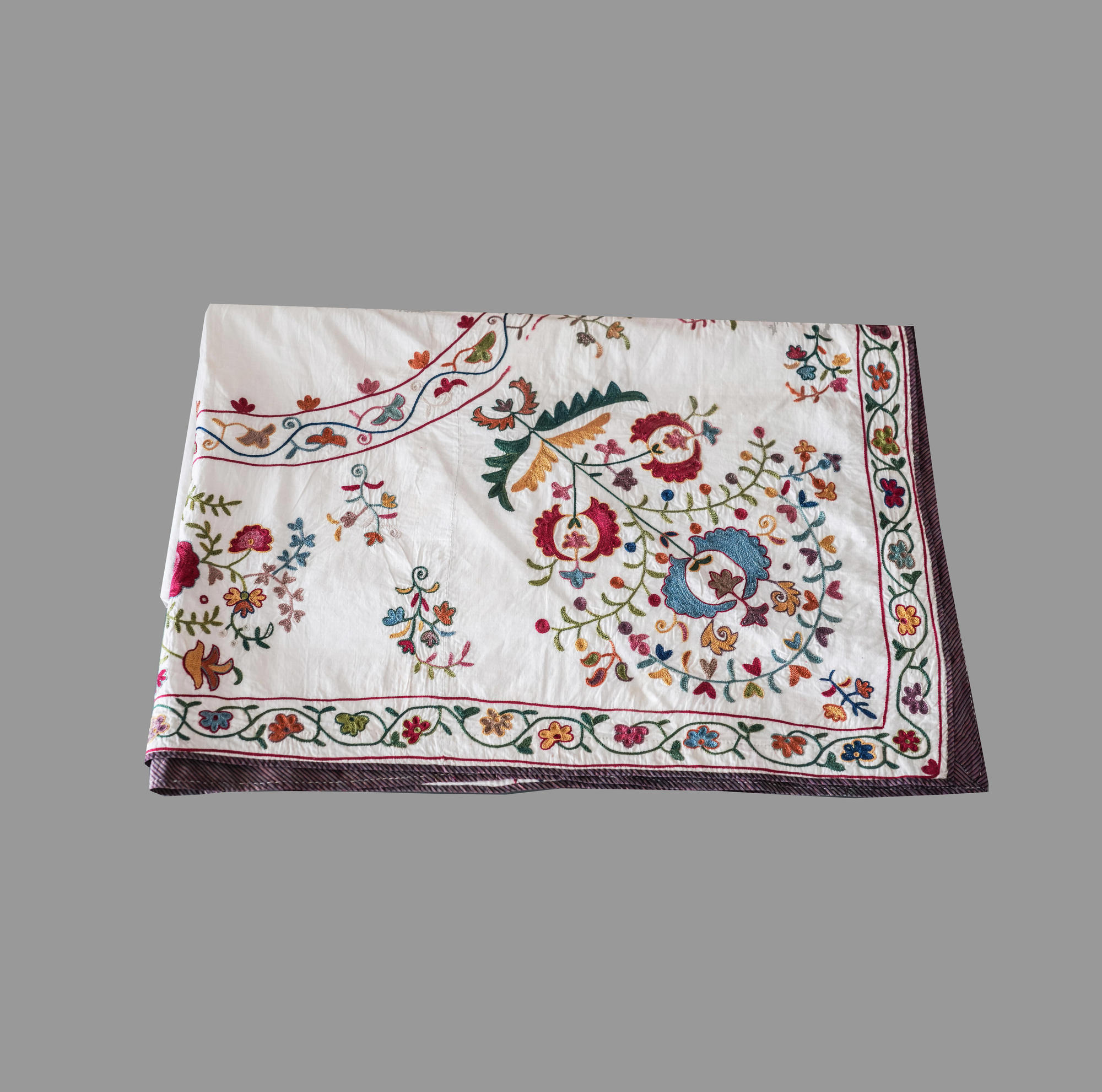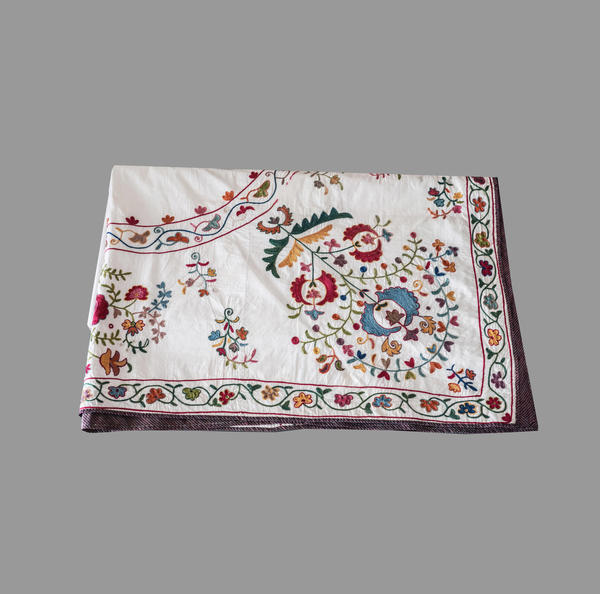The display case features a prayer rug woven in Kazan in the late 19th – early 20th centuries. The master who created the rug and its owner are unknown.
Muslims use such rugs on a daily basis laying them on the floor during their five-times-a-day prayers.
Muslims use such rugs on a daily basis laying them on the floor during their five-times-a-day prayers.
Cleanliness is one of the main religious requirements for saying namaz, and it is a prayer rug that ensures the cleanliness of the place protecting the praying person’s hands, head and body from touching the ground.
Representatives of Turkish peoples call such a rug a “namazlyk”; in Arabic, the words “sajadah” and “sajajid” are used. Interestingly, the Holy Quran does not say anything about a special cloth that should be used for prayers. It only requires that the place, where a prayer is said, should be clean.
Therefore, there are no rules concerning the shape, size, type of fabric or decorative elements of a namazlyk. Moreover, if a Muslim does not have a prayer rug handy, he can use any piece of fabric, such as a bedspread, a towel, a piece of his clothing. In some mosques, worshippers are not encouraged to use their own namazlyks, because floors are already covered with carpets there.
While there are no strict standards for prayer rugs (although the first mentions of namazlyks date back to the 10th century), they have acquired a similar look over the centuries of their existence. The fabric is about 0.5 meters wide and 1-1.5 meters long. During the prayer, a worshipper stays in the middle part of the rug, which is therefore not decorated.
On the sides, a mat is decorated with symmetrical muted embroidery, whereas its front part is adorned with exquisite and ornate embroidery, as it is the part that worshipers see during their prayers. There are no uniform embroidery standards; it all depends on the area where a namazlyk was made and the master’s personal style. A prayer rug decor often uses elements characteristic of different peoples, as well as floral ornaments. The only images that are not permitted are faces of people, animals and mythical characters.
Traditional Tatar embroidery uses a great variety of colous. The effect of the richness of colour is enhanced by a peculiar asymmetry: two different halves of the same leaf, different shoots on the same branch are embroidered with different color threads. Tambour stitch (a chain of finest loops) is used to outline the contours and fill the fabric inside the patterns. Tatar peoples have traditionally made namazlyks from woven felt, satin, silk and even brocade, a fabric woven from silver threads.
During the prayer, the rug, as well as the worshipper, should be facing the direction of Kaaba. Muslims are allowed to pray almost anywhere, except for seven types of places. Therefore, each believer must perfectly know the location of Mecca in order to put his namazlyk in the right direction.
Representatives of Turkish peoples call such a rug a “namazlyk”; in Arabic, the words “sajadah” and “sajajid” are used. Interestingly, the Holy Quran does not say anything about a special cloth that should be used for prayers. It only requires that the place, where a prayer is said, should be clean.
Therefore, there are no rules concerning the shape, size, type of fabric or decorative elements of a namazlyk. Moreover, if a Muslim does not have a prayer rug handy, he can use any piece of fabric, such as a bedspread, a towel, a piece of his clothing. In some mosques, worshippers are not encouraged to use their own namazlyks, because floors are already covered with carpets there.
While there are no strict standards for prayer rugs (although the first mentions of namazlyks date back to the 10th century), they have acquired a similar look over the centuries of their existence. The fabric is about 0.5 meters wide and 1-1.5 meters long. During the prayer, a worshipper stays in the middle part of the rug, which is therefore not decorated.
On the sides, a mat is decorated with symmetrical muted embroidery, whereas its front part is adorned with exquisite and ornate embroidery, as it is the part that worshipers see during their prayers. There are no uniform embroidery standards; it all depends on the area where a namazlyk was made and the master’s personal style. A prayer rug decor often uses elements characteristic of different peoples, as well as floral ornaments. The only images that are not permitted are faces of people, animals and mythical characters.
Traditional Tatar embroidery uses a great variety of colous. The effect of the richness of colour is enhanced by a peculiar asymmetry: two different halves of the same leaf, different shoots on the same branch are embroidered with different color threads. Tambour stitch (a chain of finest loops) is used to outline the contours and fill the fabric inside the patterns. Tatar peoples have traditionally made namazlyks from woven felt, satin, silk and even brocade, a fabric woven from silver threads.
During the prayer, the rug, as well as the worshipper, should be facing the direction of Kaaba. Muslims are allowed to pray almost anywhere, except for seven types of places. Therefore, each believer must perfectly know the location of Mecca in order to put his namazlyk in the right direction.



